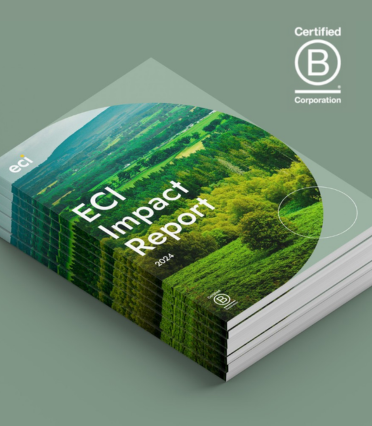Product strategy is all about considering your customer needs and evolving your product to meet them. Companies that don’t listen to customer’s changing needs may find themselves left behind, whilst companies that are too reactive can change strategy too frequently and cause confusion. We chat to Duncan Ramsay, Partner in ECI’s Commercial Team, about how companies can embed an evolving product strategy and keep a long-term roadmap in mind.
What is the point of your product?
1. Truly understand your customer and how you serve them
It’s incredibly difficult to have a good product strategy if you don’t have a good understanding as to your customer’s needs, and what your product is helping them to solve. Having a strong customer relationship also means that not only can you understand how your existing product might need to change, but also means you can assess opportunities for how new products may be able to help your customers.
This feedback from customers and an understanding of changing needs should be considered with relation to:
- How does their changing need impact your status quo?
- What is the size of the opportunity?
- How able are you to solve the need?
- Do alternatives exist that could service that need instead?
- How easy will it be to deliver?
This framework can ensure that the customer needs you are reacting to are important and exist at scale, that you are uniquely well positioned to service them, and that it’s feasible to deliver.
At CPOMS, the provider of SaaS solutions to schools, the company had a very close relationship with the teachers using its software. Through its strong-core product and high-quality service level, it had a position of trust which meant that it could assess which other activities were complimentary to the core child safeguarding and wellbeing software and how large the demand was. This enabled it to launch two adjacent products during our investment: StaffSafe to strengthen governance relating to staff members and the Engage module which supported alignment between schools and local authorities. CPOMS saw rapid traction with new products as they were so closely aligned to the needs of its customers, and CPOMS was a trusted provider.
How do you know which needs to ignore?
2. Turning off opportunities can be as key to a successful product strategy as delivering them
It is increasingly clear that technology led product development, focused on delivering exciting new technical features, often isn’t the optimal way to improve or develop products. However, having a purely customer-centric philosophy can also make companies overly reactive, delivering iterative improvements based on the needs of a sub-set of their customers or prospects, which may or may not be the best things to do for the customer base overall, or for the business. It can also lead to development teams being overwhelmed by high priority, yet incremental improvements rather than getting time for the big, step change items.
To have a scalable product strategy, companies should think about their mechanisms for prioritising opportunities considering both what works for the customer as well as what works commercially and strategically for the business. This process will enable the business to decide what they won’t be spending time on, so that everyone is focused on delivering those high-priority items that make an impact for your customers and fundamentally on your bottom line.
One way the ECI Commercial Team often helps management teams is to bring together various sources such as market data, customer usage, customer service ticket data, customer focus groups and survey data, competitive intel, and the insight from teams, to make sure data is effectively being used against more relationship-based insight to understand the potential scale of EV impact of each potential option, as well as the difficulty in delivering that ambition. There are often more great ideas than capacity in growth businesses, so selecting a short list to focus on can have great value – teams that focus on a small number of big wins are more successful than those who try to tackle everything.
Peoplesafe introduced a structured Product Development Life Cycle process, with clear stage gating of ideas through business case, planning, build, launch, in-life and retirement ensuring that the best ideas are prioritised using a structured assessment framework and managed across their life cycle. Using this framework has enabled a number of new, potentially game-changing product ideas to be prioritised for development and launch.
How will your 2022 plans inform your 2025 plans?
3. A successful product strategy should be future focused but iterative
It is important to keep your product-strategy long-term focused, aligned with your overarching business strategy rather than getting too drawn into fighting fires. Understanding your customer and supporting your strategy with the right data will be a key to this, but you will also need to build in the mechanisms to make sure those assessments are embedded rather than a one-time exercise, so that improvements are iterative.
Often, the ambition for your business, and the product as part of that is quite a step from where you are, so breaking down the journey into manageable chunks will help you to get there in a logical way. Consider who is responsible internally to deliver the product roadmap and change and evolve it in response to customer needs.
At CPOMS, they put in place a Product Director who put in place a process to prioritise which of the new products would be built first, considering how the business wanted the proposition to evolve over the coming years. Once this high level “scaffolding” was in place for the roadmap, focus could be applied to the more iterative steps that needed to happen within the shorter term, making sure they are well defined so the development team could deliver against the requirements. The roadmap at CPOMS changed over time as the business was constantly thinking through how the new products would work in practice and responding to changes in the market and customer demand – keeping an eye on the long term, while remaining flexible and not taking your eye off what needs to happen in the short term is the key.
Will your product translate to new geographies?
4. Consider your global aspirations early
At ECI, we support most of the management teams we work with around assessing adjacent or international markets. What we’ve seen from that experience is that if you have aspirations to enter another geography, it is often better to consider that sooner rather than later, so it can be incorporated into your product strategy if needed. For example, are there specific needs you will need to incorporate, such as regulatory requirements, technical requirements, languages, or localisation needs that may take time to understand fully and develop? Nuances will only be uncovered through engaging deeply in the local market, talking to customers, and understanding how your product will fit into their world. If your product doesn’t fit with local market needs, you will likely struggle to gain traction.


